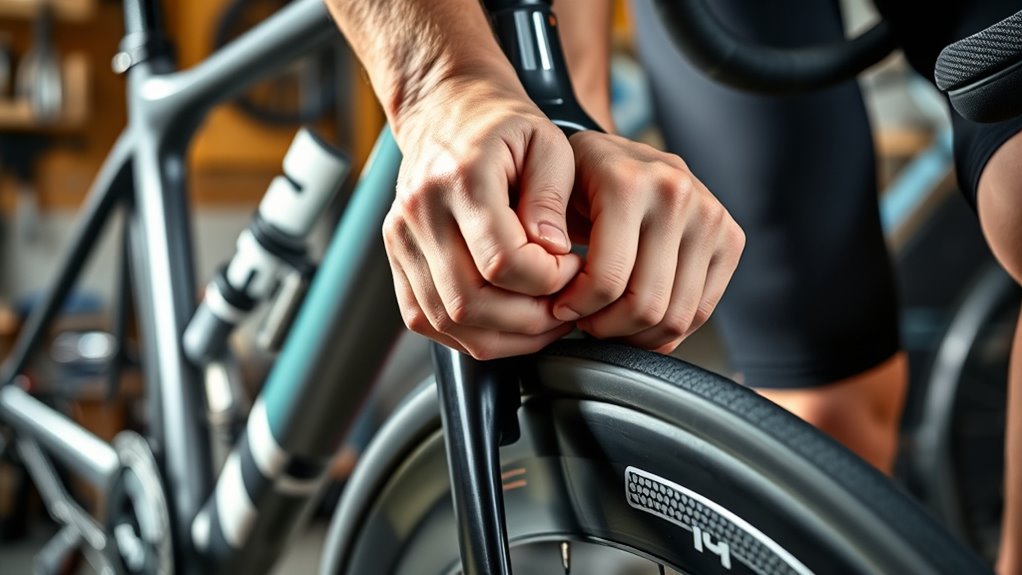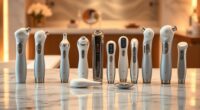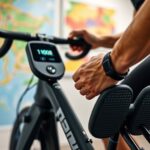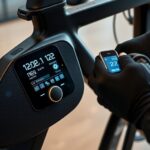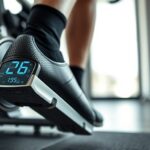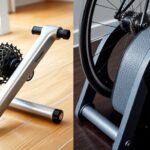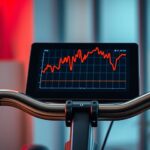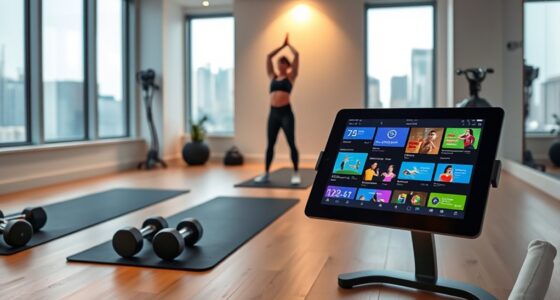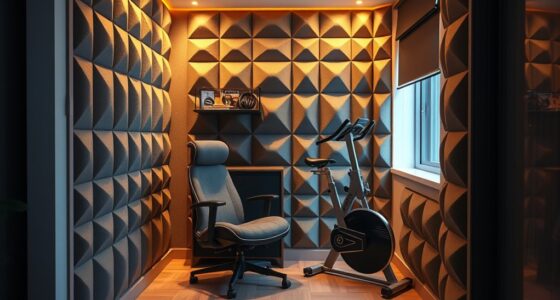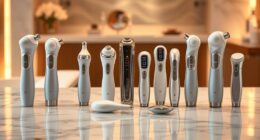To calibrate your wheel-on trainer and power meter, start by warming up your system, then follow the specific calibration procedures using the manufacturer’s app or compatible head unit. Make certain your bike is properly mounted, stable, and in a consistent environmental condition. Regular calibration, ideally before each ride or weekly, helps maintain accurate power readings and reliable training feedback. Keep exploring these steps for detailed guidance to guarantee maximum accuracy.
Key Takeaways
- Use manufacturer app or compatible head unit to initiate calibration, following specific trainer and power meter instructions.
- Warm up your trainer and bike before starting calibration to ensure accurate resistance measurements.
- Perform spin-down calibration by spinning the wheel at a set speed to measure resistance and adjust device settings accordingly.
- Conduct calibration regularly—ideally before each ride or weekly—to maintain power data accuracy over time.
- Ensure proper bike mounting, centered and tight, and perform calibration in stable environmental conditions to optimize results.
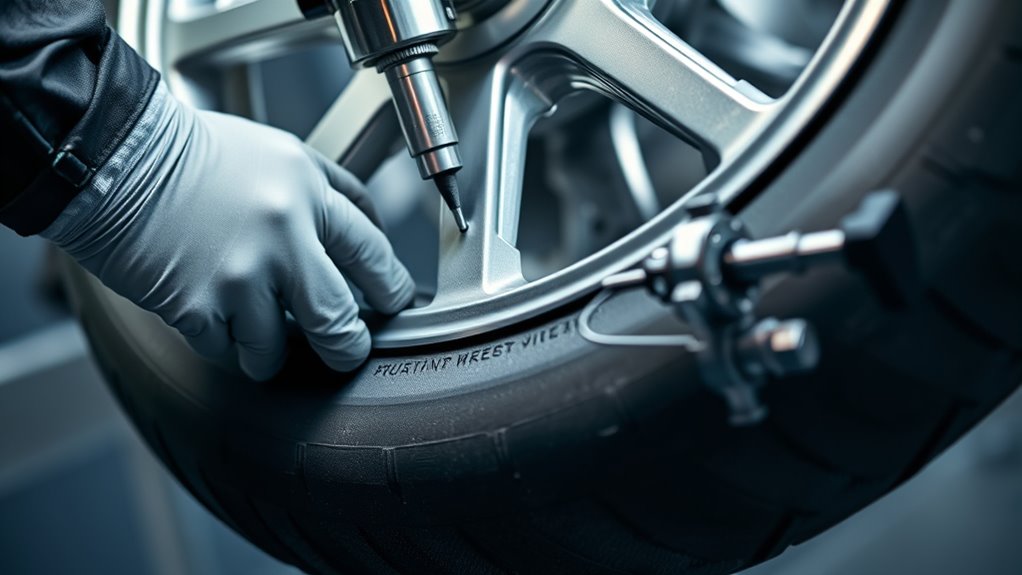
Calibrating your wheel-on trainer and power meters (PMs) is essential for ensuring accurate data and ideal training results. When you focus on precise power measurement, you get reliable feedback that helps you train smarter, improve performance, and track progress effectively. Without proper calibration, your power data can be misleading, leading to overtraining or undertraining, which hampers your fitness goals. Consequently, regular trainer calibration should be a priority in your cycling routine.
Start by understanding that trainer calibration involves adjusting your trainer to guarantee it accurately reflects your actual power output. Most trainers are factory-calibrated, but factors like temperature changes, wear and tear, or even the way your bike is mounted can cause discrepancies over time. To perform a trainer calibration, you’ll typically need your trainer’s manufacturer app or a compatible head unit. Follow the instructions specific to your trainer model, which usually involves warming up your system, then initiating a calibration process that measures the resistance and compares it against known standards. This process helps correct any drift in power measurement, guaranteeing that the data you see on your device aligns with real-world effort.
Trainer calibration ensures accurate power readings by following manufacturer instructions after warm-up.
When it comes to power measurement, accuracy is key. If your trainer or PM is off, your training zones and intensity levels won’t be correct, making it harder to train efficiently. A simple yet effective step is to perform a spin-down calibration, which involves spinning your wheel at a specified speed and allowing the trainer to measure resistance. Many trainers feature automatic calibration tools that guide you through this process, but manual calibration can also be done if needed. Consistency is crucial; calibrate your trainer regularly—ideally before every ride or at least weekly—to maintain precision in your power measurement. Regular calibration is important because factors like environmental conditions and device wear can impact accuracy over time.
Keep in mind that environmental factors, like temperature, can influence calibration accuracy. When calibrating, try to do so in a stable environment, avoiding extreme temperature fluctuations. Also, ensure your bike is mounted correctly—centered and tight—since misalignment can skew power readings. If your power meter is separate from your trainer, calibration becomes even more important. Regularly calibrate your PM using its specific procedure, often involving a zero-offset or spindown calibration, to keep data consistent across devices.
Frequently Asked Questions
How Often Should I Calibrate My Wheel-On Trainer?
You should calibrate your wheel-on trainer every few weeks to maintain ideal trainer accuracy. Regular calibration ensures your power readings stay precise, especially if you notice discrepancies or after transport or significant temperature changes. Calibration frequency depends on how often you ride and your trainer’s usage. By keeping up with regular calibration, you ensure your training data remains reliable and consistent, helping you track progress and achieve your fitness goals more effectively.
Can I Calibrate Without Specialized Tools?
A stitch in time saves nine, so you can try DIY calibration without specialized tools. Many trainers offer toolless adjustment features, making it easy to fine-tune your setup. While it might not be as precise as using dedicated tools, you can often get a good enough calibration by following the manufacturer’s instructions. Just make certain your trainer is level and your tire pressure is correct for the best results.
Does Calibration Affect Indoor vs. Outdoor Performance?
Calibration does affect indoor accuracy more noticeably since indoor conditions are stable and controlled. Without calibration, your indoor trainer might not reflect your true performance, but outdoor variability—like wind or terrain—can mask small inaccuracies. As a result, calibrating ensures your indoor data aligns with real-world effort, giving you consistent, reliable measurements. Keep in mind, regular calibration helps maintain accuracy regardless of whether you’re training indoors or outdoors.
Are There Differences in Calibration Procedures for PMS?
Think of calibration procedures for PMs as a dance where precision matters. You’ll want to perform accuracy testing regularly and keep firmware updates current to guarantee your PMs stay in sync. While the core steps are similar, some models may have specific instructions or settings, so always check manufacturer guidelines. By doing so, you’ll maintain ideal performance and reliability, making your indoor training experience smoother and more enjoyable.
What Are Common Signs My Trainer or PM Needs Calibration?
You’ll notice your trainer or PM needs calibration when the calibration accuracy declines, causing inconsistent readings or jumps in data. Regular trainer maintenance helps spot these issues early, like uneven resistance or display errors. If your data seems off despite proper setup, it’s time to recalibrate. Proper calibration ensures accurate performance metrics, so don’t overlook signs of drift or irregularities—they indicate your trainer or PM may need recalibration to function correctly.
Conclusion
So, after all that fuss about calibration, you’d think it’s impossible to get it wrong, right? Turns out, even the tiniest misstep can throw off your data—who knew? But don’t worry, if you’ve followed all the steps, you’re practically a pro now. Just remember, the real challenge isn’t the calibration itself; it’s resisting the urge to double-check it every five minutes. Happy riding, and may your watts always be accurate!
